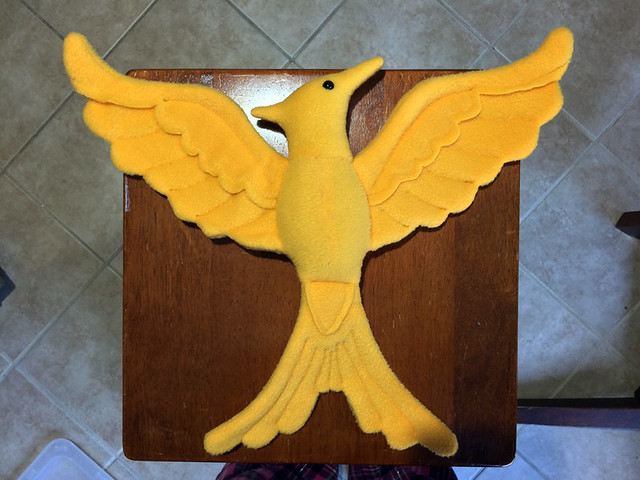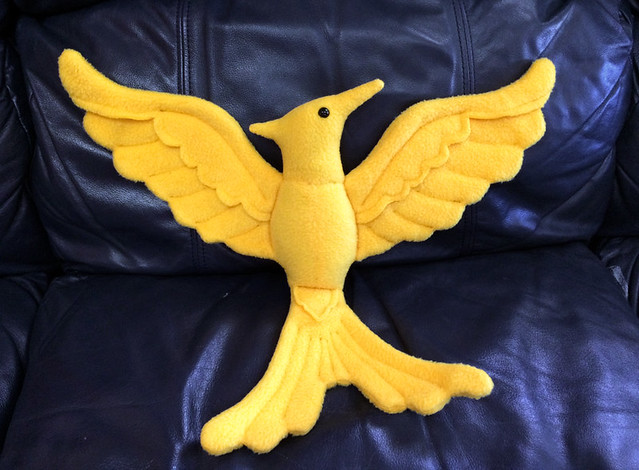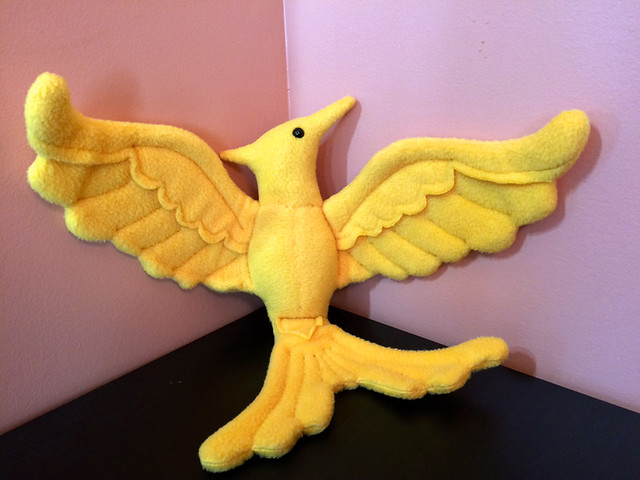My Mama feeds some feral cats that live in the forest surrounding her property. So over the past few years I've been trapping them when I can to get them their shots and spayed/neutered, and I've been making them some feral cat shelters to help keep them warm during the cold winter months. I have looked at a bunch of tutorials on how to do it, and some friends of mine have asked how I make them so I thought I would post my own method here with photos.
Materials you will need:
- Rigid Foam Insulation - 1 in. x 2 ft. x 8 ft (
Product Link)
- Reflectix (
Product Link)
- 30gal/120qt Plastic Storage Bin (
Product Link)
- Gorilla Tape (
Product Link)
- Utility Knife (
Product Link) - This what I have but I would suggest one with a longer blade.
- Sharpie/Marker
- Straw (not hay or blankets)
- Two heavy bricks/stones to put on lid to keep the top secure and keep heavy winds from knocking it over when empty.

Instructions:
1) First you are going to place the bin on top of the rigid foam and trace the bottom with your sharpie. Once traced, cut out the shape with your utility knife, and place it in the bottom of the bin.
2) For the long sides of the bin you can either measure the height with a yardstick or place the sheet of foam into the box and mark where you want to cut. You want the side pieces to come up to about 2-3 inches below the top of the bin to leave room for the top and the lid. I didn't do that here and had to do some after cut trimming to let the lid latch on. The nice thing about this size bin is that the width of the foam is perfect for the width of the tote. It just saves a few extra cuts.
3) Because the storage bin is slightly angled, with the top being larger than the bottom, the small side pieces are not going to be perfect rectangles. With the bottom and the long side pieces in place, and leaning as is natural for them, you can either measure the length at the top and bottom of the empty space, or like I did here, you can take 2 scrap pieces of foam and get a rough estimate of the top and bottom measurements needed.
3a) After you have these measurements, or rough approximations, take one
of the long side pieces and place it on the foam, lining up the edges.
Draw a line across the top onto the uncut foam. Now you have the correct
height for the side pieces.
3b) Using either you're measurements or your rough approximations, mark
them with the marker onto the uncut foam. Remember to center the bottom
measurement in relations to the top measurement.
3c) Draw a lines
connecting the top endpoints to the bottom end points. Cut out the shape. Now take the new shape, and trace it and cut out another one. These are your two short side pieces.
3d) Place the short side pieces into the bin.
4) You can either measure the length and width needed for the top piece (it will be slightly smaller than the lid) or you can eyeball it like I did here. I placed a piece of the remaining foam on top and cut out what I thought would fit. It was a little big so I trimmed it down, and rounded the corners to fit.
5) Now its time to line the foam pieces with the Reflectix. This adds extra warmth to the shelter by reflecting the body heat back to the cat, like a Mylar emergency blanket.
Place the foam pieces onto the Reflectix, and trace the shapes and cut them out, one by one. If you need to use two smaller pieces of Reflectix to cover a foam piece, that is fine. You can see in the one picture where my two long sides have a seam because I was trying to minimize material waste.
5a) Once the pieces are cut, make tape donuts with the Gorilla tape and
place them on rigid foam pieces. Attach the matching piece of Reflectix.
Do this for all pieces.
5b) Put all the pieces back inside to make sure they all fit. It will be a bit snug in spots depending on how tightly the pieces fit before. If anything does not fit, trim as needed. You want a snug fit, but don't want to press so hard to put the pieces in that you end up snapping them.
6) Draw a 6x6 inch square on two sides of the bin, about 4 inches up from the bottom. These will be the entryways. Why two? Because cats like to have an escape route in case another animal comes lurking around one of the entries. Think of it as an emergency exit.
6a) Use your knife to cut out the openings in the bin. The plastic may crack a bit. Using a hairdryer on the plastic for a few minutes first helps soften it and make it easier to cut. I find the Sterlite bins to be easier to cut than some of the harder plastic. If you end up cracking the door some, its ok.
7) Now that the doors are cut in the plastic, place the the bottom and sides pieces back into the bin. Once everything is in and snug, trace the entryways onto the foam pieces.
7a) Take out the foam pieces and cut out the entryways. This is where a knife with a longer blade than the one I have would come in handy. It can still be done with a shorter blade, it just takes several cuts to get through the foam and Reflectix layers and is more like carving out the doorways.
7b) Doorways cut out.
8) Now that the doors are cut out, put all the foam pieces back inside again. Remember you want the Reflectix facing inward like shown.
8a) Sides all snugly placed.
8b) Put the top foam piece on.
8c) And place/latch the lid on.
Your cat shelter is now almost ready! The final thing is to get some straw (not hay) and lightly fill the interior with the straw. This provides a warm bedding that repels water. Hay and blankets do not repel water, and if a wet cat comes inside, they will absorb the water. Imagine being in the cold wrapped in a wet blanket vs a dry blanket. Not fun!
9) Fill the shelter with straw, pushing the straw up on the sides somewhat, making a nest. Keep the doorways clear as you can. Once the cat comes in, they'll rearrange the straw as they like.
10) Place the shelter where you'd like. Try to take into account the direction the wind blows most of the time and keep the doorways facing away from the wind as much as possible. Put the bricks or stones on top to help weigh down the shelter and keep the lid in place.
And you're done! You've just made a cozy little place for a feral/homeless kitty to hide and warm up when the temperatures are low. Thank you for helping out a feral kitty or two. Don't forget to Spay and Neuter!
Here is a picture of two of the shelters at my Mama's house currently still in use.





























